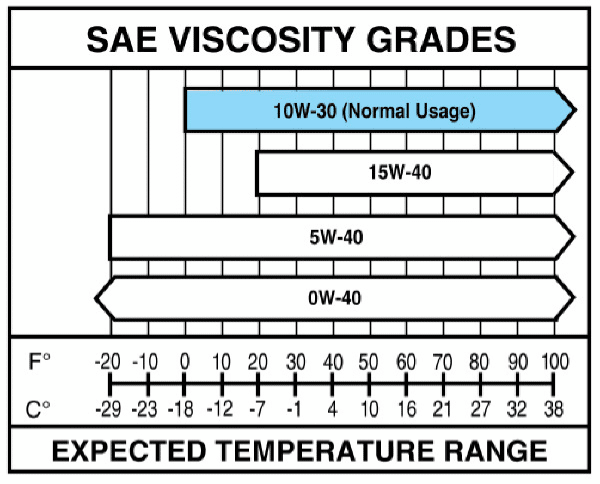Ford 6.7L Power Stroke (code name “Scorpion”), an engine developed exclusively by Ford engineers and assembled in-house, has been used in Super Duty rigs from 2011 to today. The “six-seven” has proven itself to be a good engine in the near-decade it has been around.
The powerplant has three generations:
- 1st-gen: 2011-2014;
- 2nd-gen: 2015-2019;
- 3rd-gen (1,050 lb-ft torque): 2020-2021.
What Is The 6.7 Powerstroke Engine Oil Capacity And Why Is It Important To Know?
The Ford 6.7 Powerstroke diesel engine has a maximum Engine Oil Capacity of 13.0 quarts with an oil filter change. This applies to all generations of the engine.
Some websites state that Engine Oil Capacity is 15 quarts, but that’s not correct. There was a printing mistake in some owner manuals.
| Years | Engine Oil Capacity (with filter) | Oil type |
| 2011 – today Ford F-250, F-350, F-450, F-550 Super Duty | 13 quarts (12.3 liters) | SAE 10W-30, SAE 0W-40, SAE 5W-40 WSS-M2C171-F1 |
It is important for proper maintenance to know the Engine Oil Capacity of your Ford 6.7 diesel engine in order to ensure that the correct amount is being added during an oil change.
Adding too little can lead to engine damage while adding too much can create excess strain and decrease fuel efficiency. It is also necessary to consider the type and weight of oil recommended for your specific engine, as using the wrong type can lead to serious problems.
By maintaining accurate knowledge of the 6.7 Powerstroke’s Engine Oil Capacity and utilizing it properly during maintenance, you can extend the life and performance of your engine.
How Do You Determine How Much Oil Your Engine Needs For A Refill?
One important step in maintaining a car’s engine is ensuring it has the proper levels of oil. But how do you know exactly how much oil your engine needs?
The best place to start is by consulting your owner’s manual, which will provide specific instructions for your particular make and model. In general, however, the oil change process involves removing the dipstick from the engine, wiping it off, reinserting it, and then checking the level. If it falls below the minimum mark, then you need to add more.
Maintaining oil levels helps keep your engine running smoothly and prevents unnecessary wear and tear. Regularly checking and refilling as needed can save you time and money in the long run.
What Are Some Common Mistakes People Make When Filling Up Their 6.7 Powerstroke Engines With Oil And How Can You Avoid Them?
When it comes to filling up your 6.7 Powerstroke engine with oil, one of the most common mistakes is overfilling. Often, people do not know the exact amount of lubricant and pour it randomly. Too much oil can cause leaks and damage to the engine.
Additionally, many people forget to check the oil level regularly, leading to inadequate lubrication and resulting in costly damage. It’s important to make sure you are using the recommended type of oil for your specific model, as using a lower quality or incorrect type can also lead to problems.
To avoid making these mistakes, make sure to read the owner’s manual and follow the instructions carefully when refilling your engine with oil. Check the oil level regularly and always use high-quality approved oils for your model. Taking these precautions will ensure that your engine runs smoothly and efficiently.
What Kind Of Oil Does Ford 6.7 Power Stroke Engine Take?
The 6.7L Power Stroke Engine requires a Motorcraft SAE 10W-30 Full Synthetic Diesel Motor Oil meeting the WSS-M2C171-F1 specification.

The WSS-M2C171-F1 specification is a Ford Motor Company standard that must be met for an oil to be compatible with the 6.7L Power Stroke Engine. This standard includes requirements such as high-temperature deposits, sludge control, pumpability, low-temperature fluidity, and wear protection.
| Temperature Range | Viscosity |
| > 0° F normal usage | SAE 10W-30 API CJ-4 meeting WSS-M2C171-F1 specifications |
| > -20° F severe duty | SAE 5W-40 API CJ-4 meeting WSS-M2C171-F1 specifications |
| > 20° F for biodiesel blends | SAE 15W-40 API CJ-4 meeting WSS-M2C171-F1 specifications |
Motorcraft SAE 5W-40 Full Synthetic Diesel Motor Oil meets or exceeds all of these requirements and is specifically designed for use in the 6.7L Power Stroke Engine. It is important to use an oil that meets this specification in order to maintain optimal engine performance and protect against wear and tear.
What Is Severe Duty?
Any vehicle that meets one or more of the following criteria is classified as “severe duty” service:
- If your car engine is idled for more than 10 minutes within a 60-minute drive period, operated at low speeds (under 25 mph) for extended periods of time, or frequently operated stationary, this may be an issue.
- The vehicle is frequently used for short trips with many stops, or the engine is often operated in a way that doesn’t let it reach its full temperature.
- The vehicle is driven off-road or in dusty conditions.
- The vehicle is driven/operated in temperatures below -9° F or above 100° F.
- The vehicle performs light to medium towing exceeding 1,000 miles between normal oil change intervals.
- Performs heavy trailer towing.
- Vehicle hauls cargo at or near its maximum payload capacity for extended periods of time.
- The engine can use different types of fuel, not just ULSD, including biodiesel blends.
If you own a Super Duty pickup truck, it likely falls under the severe duty service category. I would recommend using 5W-40 full synthetic engine oil as long as the vehicle is operated in ambient temperatures greater than -20° F.
How Often To Change The Oil On A Ford 6.7 Powerstroke?
The 6.7L Powerstroke diesel engine’s oil should be changed every 10,000 miles or as indicated by the Intelligent Oil Life Monitor system.
Changing the oil regularly is essential for maintaining the health of your engine and preventing costly repairs down the road. Following the recommended schedule can keep your engine running smoothly and prolong its life.
Best Oil For 6.7 Powerstroke
WSS-M2C171-F1 approved oils:
- Leading Manufacturer Of High-Quality Products
- International Renown For Our Diverse Range Of Award-Winning Products
- Fully Equipped With State-Of-The-Art Technology
- All Products Have Been Designed With The Professional In Mind
- High performance synthetic oil made diesel engines requiring the use of an emissions compliant oil for the 2007 and 2010 emissions equipment
- Specially formulated to maximize component life and extend drain intervals
- Features improved fuel performance with excellent high temperature break down resistance
- Low temperature pumpability to maximize cold-induced startup wear
- Recommended for both diesel and gasoline engines
- Helps control thickening and provides outstanding filterability with the newer high-soot producing emission-controlled engines
- Protects against varnish, sludge and carbon deposits
- Great for use in both on-road and off-road applications
What Are The Symptoms Of Low Oil Pressure In A 6.7 Powerstroke Engine?
If your 6.7 Powerstroke engine is experiencing low oil pressure, there are a few potential causes. It could be due to a faulty oil pump, dirty or contaminated oil, an oil leak, or a clogged oil filter.
If you suspect your engine has low oil pressure, it’s important to have it checked by a qualified mechanic as soon as possible. Continuing to operate the engine without adequate lubrication can cause serious damage.
What Are The Symptoms Of Overfilling A 6.7 Powerstroke Engine With Oil?
Overfilling your 6.7 Power Stroke diesel engine with oil can lead to a number of problems, such as leaks, decreased fuel efficiency, and engine damage. If you notice any oil leaks or puddles under your car, it’s important to have it checked by a mechanic as soon as possible.
Generally, avoiding overfilling your engine is best by following the recommended oil change interval and only adding the amount specified in your owner’s manual. Doing so can save you time and money in the long run.
The bottom line is that maintaining proper oil levels in your 6.7 Powerstroke engine is essential to keep it running smoothly and avoid costly repairs down the road. Be sure to consult your owner’s manual for specific instructions on your model and check the oil level regularly. Using high-quality approved oils and changing them at the recommended interval can help keep your engine healthy for years to come.
How To Change Your Oil And Oil Filter?
To change your oil and oil filter, you will need the following supplies:
- Motorcraft SAE 5W-40 Full Synthetic Diesel Motor Oil
- Oil filter
- Funnel
- Clean container for old oil
- Ratchet
- Socket (the size will depend on your model)
- Wrench (the size will depend on your model)
- Pliers
First, find a level spot to park your vehicle and set the parking brake. Place a clean container under the oil drain plug and remove the plug with a ratchet and socket. Be careful – the hot oil may splash out when you remove the plug. Allow the oil to drain completely.
While the oil is draining, locate the oil filter and remove it with a ratchet and socket (or wrench, depending on your model). Be sure to place the old filter in the container to catch any drips.
First, coat the gasket with clean motor oil to install the new filter. This will help create a seal and prevent leaks. Then, screw on the new filter by hand until it’s snug. Do not overtighten – this can damage the filter.
Once the filter is in place, reinstall the oil drain plug and tighten it with a ratchet and socket (or wrench).
Now it’s time to add new oil. Consult your owner’s manual for the recommended amount and type of oil for your model. Pour the oil into the funnel and slowly add it to the engine. Once you’ve added the specified amount, check the oil level with the dipstick and add more if necessary.
Be sure to dispose of your used oil and filter properly. Many auto parts stores will accept used motor oil for recycling.
Following these simple steps can help keep your 6.7 Powerstroke engine running smoothly for years to come. Regular oil changes are essential for maintaining the health of your engine and preventing costly repairs down the road. Using high-quality approved oils and changing them at the recommended interval can help keep your engine healthy for years to come.
Are There Any Other Ways To Improve The Performance And Longevity Of Your 6.7 Powerstroke Engine Without Breaking The Bank?
Regular maintenance is key when it comes to maximizing the performance and extending the lifespan of your 6.7 Powerstroke engine’s lifespan. Experts recommend changing the oil and filter every 7,500 miles or so, as well as keeping an eye on the coolant level and checking for any potential leaks.
Additionally, considering a performance upgrade like a cold air intake system can also help boost engine performance without breaking the bank.
Consulting with a trusted mechanic or dealership can provide valuable insights on how to best care for your engine.
Overall, staying proactive about regular maintenance and considering cost-effective upgrades are both great ways to improve performance and prolong the life of your 6.7 Powerstroke engine.
I hope this article has helped to clear up some confusion surrounding the Ford 6.7 Power Stroke Engine Oil Capacity and how to properly fill your engine with oil. Remember, it is always better to stick with the middle mark when it comes to the oil change. As always, feel free to contact us with any questions or comments, and thanks for reading!
Last update on 2026-01-05 / Affiliate links / Images from Amazon Product Advertising API







